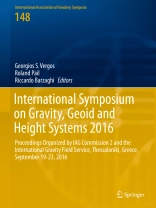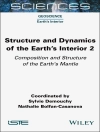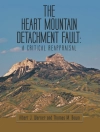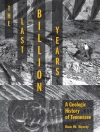These proceedings contain 27 papers, which are the peer-reviewed versions of presentations made at the International Association of Geodesy (IAG) symposium “Gravity, Geoid and Height Systems 2016” (GGHS2016). GGHS2016 was the first Joint international symposium organized by IAG Commission 2 “Gravity Field”, the International Gravity Field Service (IGFS) and the GGOS Focus Area “Unified Height System”. It took place in Thessaloniki, Greece, in September 19-23, 2016 at the premises of the Aristotle University of Thessaloniki. The symposium was organized by the Department of Geodesy and Surveying of the Aristotle University of Thessaloniki, which presently hosts the IGFS Central Bureau. The focus of the Symposium was on methods for observing, estimating and interpreting the Earth gravity field as well as its applications. GGHS2016 continued the long and successful history of IAG’s Commission 2 Symposia.
Tabla de materias
Part 1 Global gravity field modelling.- Rigorous evaluation of gravity field functionals from satellite-only gravitational models within topography.- Application of the Recursive Least-Squares adaptive filter on simulated satellite gravity gradiometry data.- Part 2 Local/regional geoid determination methods and models.- Accuracy of regional geoid modelling with GOCE.- The effect of noise on geoid height in Stokes-Helmert method.- Approximation of local quasi-geoid using point mass method based on Bjerhammar theory.- Optimal combination of satellite and terrestrial gravity data for regional geoid determination using Stokes-Helmert’s method, the Auvergne test case.- New modifications of Stokes’ Integral.- Gravimetric investigations at Vernagtferner.- Analysis of the GRAV-D airborne gravity data for geoid modelling.- The African 300”x300” DTM and its validation.- Evaluation of the African Gravity Database AFRGDB V1.0.- Part 3 Absolute and relative gravity: observations and methods.- New absolute gravity measurements in New Zealand.- Strapdown airborne gravimetry using a combination of commercial software and stable-platform gravity estimates.- First six months of superconducting gravimetry in Argentina.- Tilt susceptibility of the Scintrex CG-5 Autograv gravity meter revisited.- Gravity calibration baseline between Jeddah and Taif in the Kingdom of Saudi Arabia.- Part 4 Height systems and vertical datum unification.- Investigation of geoid height variations and vertical displacements of the Earth surface in the context of the realization of a modern vertical reference system – A case study for Poland.- Analysis of GOCE omission error and its contribution to vertical datum offsets in Greece and its Islands.- Quality control of height benchmarks in Attica, Greece, combining GOCE/GRACE satellite data, global geopotential models and detailed terrain information.- GOCE variance and covariance contribution to height system unification.- The use of GNSS/levelling and gravitydata for the Spanish height system unification.- Comparison of different approaches to gravity determination and their utilization for calculation of geopotential numbers in the Slovak national levelling network.- Assessment of the Greek Vertical Datum – A case study in central Greece.- Evaluation of NRTK-based heighting techniques from different continuously operating GNSS reference networks in Greece.- Part 5 Satellite altimetry and climate-relevant processes.- SLA determination in coastal areas using Least-Squares Collocation and Cryosat-2 data.- Spectral analysis and validation of Multiple Input / Multiple Output DOT estimation in the Eastern Mediterranean Sea.- Preliminary Results on the Estimation of Ground Water in Africa using GRACE and Hydrological Models.
Sobre el autor
Jeffrey T. Freymueller, Series Editor
Laura Sánchez, Series Assistant Editor












